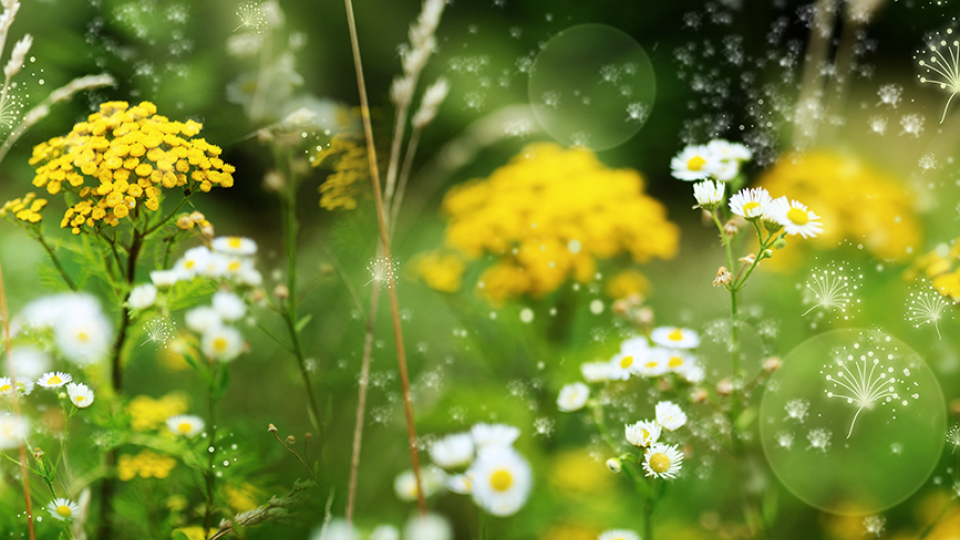
It’s finally here — the highly-anticipated clear(ish) skies, the fresh blooms, the post-7-p.m. sunset … and that dreaded itchy, sneezy feeling.
After months of gloomy, rainy weather, it’d be great to venture outside without getting red-eyed and stuffy-nosed. But thanks to the abundance of birch trees and pollen season starting weeks earlier now in the PNW, seasonal allergies can feel unavoidable. You don’t have to just suffer through the snot — there are things you can do to make it more bearable.
Allergy season in the PNW
Dr. Stacey Ma, an allergist at the UW Medicine Allergy Clinics, says that Upper Left locals commonly experience nasal congestion, rhinorrhea (aka a runny nose that can drip from the nose or down the back of the throat) and itchy eyes and noses during allergy season.
If you’re someone with seasonal symptoms, Ma says you may have allergic rhinitis, which is an allergic response that can cause a runny nose, sneezing, congestion and itchiness when exposed to specific allergens. (It’s also possible to have non-allergic rhinitis, where your nasal irritation isn’t necessarily related to any specific allergens.)
And if that wasn’t enough to deal with, it turns out, fighting your allergies all season long can affect your mental health, too.
“Nasal allergies have been associated with anxiety and depression as well as deficits in attention, learning and memory,” says Ma. “Rhinitis has also been associated with disturbed sleep, daytime fatigue and irritability.”
Tips to survive allergy season
Thankfully, it’s possible to treat these symptoms and enjoy the spring season even if you’re predisposed to the sunshine suds. These strategies will help you feel a little better when allergy season hits.
Take allergy medication
Ma suggests starting with an intranasal antihistamine for seasonal symptoms. This type of nasal spray treats rhinitis by blocking the effects of histamine— the chemical produced in your body that causes allergy symptoms — and reducing inflammation.
“If your symptoms are persistent, try using an intranasal corticosteroid,” says Ma. The active ingredients in these sprays belong to the steroid family of medications, which tamp down immune activity to reduce swelling and mucus in your nasal passages, relieving that stuffy nose.
“You can combine an intranasal corticosteroid with an intranasal antihistamine to provide additive benefits over using just one nasal spray,” says Ma.
If you just need to clear out some mucus or soothe dry nasal passages, you can use a nasal saline spray, which is a simple saltwater solution that’s safe enough even for babies.
Oral antihistamines like Zyrtec or Allegra can also be beneficial for allergy symptoms. Ma says these are particularly helpful if you get watery or itchy eyes.
“Start these medications and nasal sprays two to four weeks before pollen season,” says Ma, since it can take a while for their effects to fully kick in. “If you know you have a specific pollen sensitivity, you can start the medications based on your local pollen calendars.”
And don’t worry if it’s already the peak season of your body’s least-favorite allergen; if you want to pursue the medication route, start taking them as soon as possible.
Change your daily habits
Because pollens from grasses, trees and weeds travel through the air, there are a variety of easy lifestyle adjustments you can make to limit your exposure.
- Keep your windows closed during pollen season, especially during the day, to provide a barrier against pollen. Using air purifiers can also be a good way to keep the indoor air clean.
- Shower, change clothes and use a nasal saline spray after working or playing outdoors.
- Pay attention to your local pollen counts, especially if you are more sensitive to specific pollens, and use them to help guide when to limit time outside or figure out which places to avoid during pollen season. If you’re on the go and can’t check a local pollen calendar, weather apps can send you alerts when pollen counts in your area start to rise.
Go to the allergy doctor
If you can’t seem to get a handle on your seasonal allergies — or you’re not even quite sure what you’re allergic to — it could be worth a visit to an allergy doctor to get an allergy test.
There are several different types of allergy tests, but your doctor will likely start with a skin prick test. On a flat surface like your forearm or your back, your doctor will drop several watery solutions that contain various allergens — like pollens from trees or grasses — then use a sharp tool to prick your skin to allow the allergen to enter. If you’re allergic to the introduced allergen, a small, sometimes red bump will appear on your skin on the respective prick sites. If you have a lot of allergies, be prepared — it can get itchy.
Allergy tests can help you figure out which pollens you are more sensitive to or help you determine which allergy medications will work the best for you.
The takeaway
It’s no fun to feel miserable when the sun (finally) comes out. Staying on top of these preventive measures can keep you sniffle-free on the trails — and well-rested for all the spring days to come.

 Healthy ideas for your inbox
Healthy ideas for your inbox





